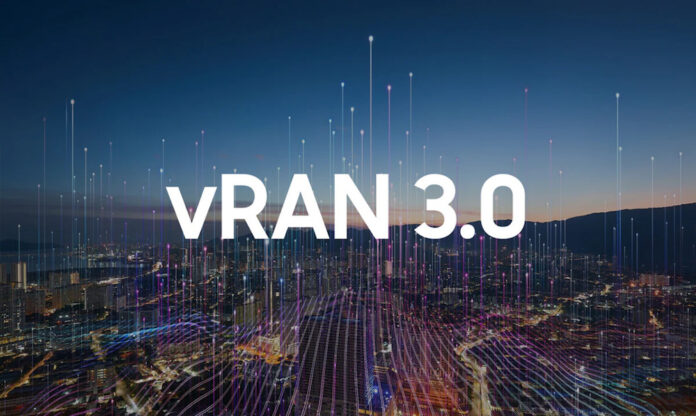Vodafone’s Open RAN trials will be a likely benefactor
Samsung has signed a new product innovation agreement with Intel to more closely align their respective virtualised Radio Access Network (vRAN) efforts.
Samsung will integrate its vRAN 3.0 software with 4th Gen Intel Xeon Scalable processors with Intel vRAN Boost which will give the vendor greater capacity as it can support more cells with the same number of servers – with all the usual power and cost savings that brings.
The two have been working on vRAN since 2017 and already have their solutions in commercial networks in the US, UK and Japan. These were typically using Samsung’s vRAN software and Intel’s previous generation processor.
In February, Samsung and Vodafone announced their plans to accelerate 5G Open RAN expansion across Europe, beginning new open network initiatives in Germany and Spain, while enhancing Vodafone’s 5G network in the UK.
The move demonstrates Samsung’s push to be a virtualised network vendor of choice, while preparing for the inevitability – as they see it – of an Open RAN future.
Last December, Vodafone announced it was deploying Open RAN technology on 16 mobile masts in the south-west of England. The operator, which claimed this as a first for a European urban environment, was doing this with Dell, Intel, Samsung, Wind River and Capgemini.
Virtual improvements
Samsung said its latest vRAN 3.0 capabilities include 200MHz 3-Cell support for 64T64R Massive MIMO radios, power saving features and improved automation. In addition to its enhanced features, Samsung’s vRAN also supports multiple radio access technology (Multi-RAT) – across 2G, 4G and 5G
“Intel has been a close innovation partner within Samsung’s 5G vRAN ecosystem, helping advance our goal of working with industry-leading innovators to develop and commercialise best-in-class vRAN solutions that meet the highest standards,” said Samsung Electronics VP and head of technology strategy group, networks business, Jeongho Park.
“The mobile industry is on a transformational journey toward end-to-end network virtualisation,” said Intel VP and GM wireless access networking division Cristina Rodriguez. “This new agreement will deepen [our] collaboration, enabling both companies to jointly speed-up operators’ vRAN deployments at scale and to deliver a strong combination of flexibility, performance and power efficiency.”
The companies said they had successfully completed interoperability tests, accomplishing a first call on Samsung’s vRAN running on the 4th Gen Intel Xeon Scalable processors with Intel vRAN Boost. This enhanced vRAN offering is expected to be commercially available in the second half of 2023.
Core is virtual, time for the RAN
Intel claims it’s likely that more than 90% of core network deployments will be virtualised by the end of 2023, with almost all known virtualised network servers running on Intel CPUs. Given Intel’s recent agreement to manufacture custom 5G SoCs (system-on-chip) for Ericsson, it has VRAN in its sights.
vRANs convert RAN functions to software-defined processes and while antennas are still needed to transmit and receive radio frequencies, the process of converting this data into a format that other RAN functions can access can be virtualised, writes CCS Insight analyst Richard Webb in a blog.
“Intel has taken up the challenge, developing an architecture for virtualising the RAN all the way to Layer 1 of the software stack. Based on a flexible, programmable general-purpose chip integrated with acceleration, its 4th Gen Intel Xeon Scalable processor with vRAN Boost, launched at MWC, enables full RAN virtualisation,” he said.
Operators gain benefits in their network operations. For example, can implement dynamic power management and network function redistribution, meaning that failures in network operation and upgrades can be handled by moving the network workload to a different server without sending technicians to a cell site, he writes.
“Samsung’s vRAN 3.0 launched [at MWC] features for performance optimisation, including tools that increase bandwidth support of massive-MIMO radios — by providing a three-cell configuration with 200MHz of bandwidth support, it can triple the radio bandwidth of previous solutions,” he writes.
“Samsung also announced its Cloud Orchestrator for automating life cycle management of large-scale vRAN, streamlining onboarding and deployment processes, making it easier to manage up to thousands of cell sites from a unified platform,” he added.
Webb said vRAN can enhance radio performance without sacrificing energy efficiency. “The Samsung vRAN software can analyse hourly traffic patterns to optimise conditions and automate networks, including an automation-based CPU sleep mode in periods of low data traffic, potentially creating significant energy savings. This is vital in the RAN, the most energy-intensive domain in the network,” he concludes.


